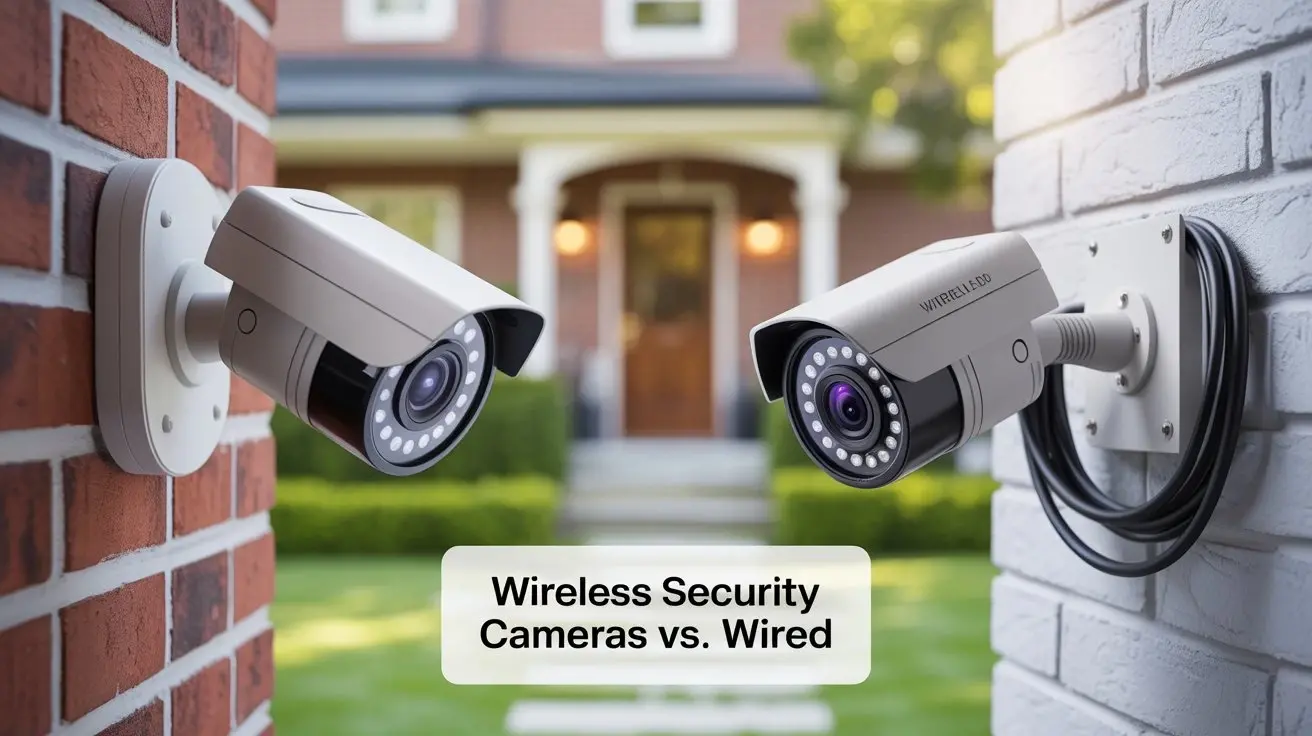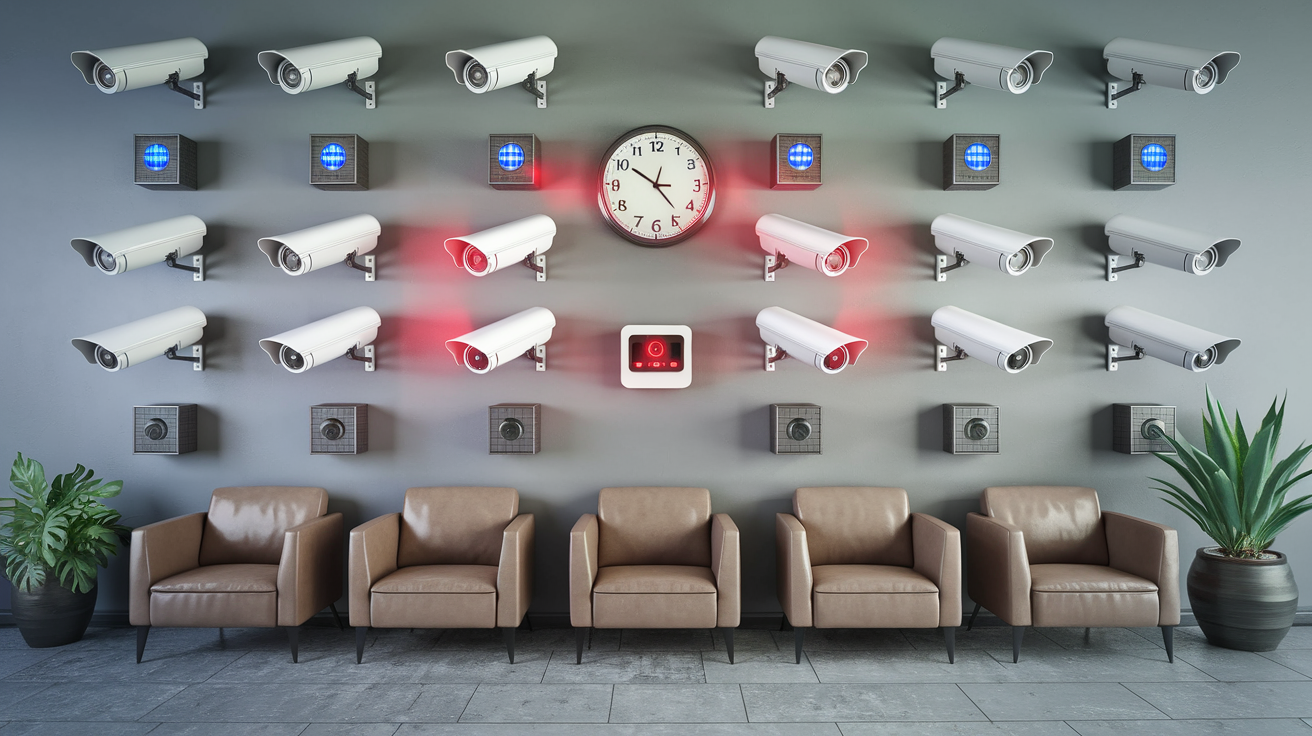As we move deeper into 2025, the landscape of home and business surveillance is undergoing a profound transformation, driven by artificial intelligence (AI). AI-driven security cameras are redefining how we monitor and protect our spaces, offering unprecedented capabilities like facial recognition, object detection, behavioral analysis, and predictive analytics. These intelligent systems go beyond traditional video recording, enabling proactive security measures and seamless integration with smart home ecosystems. From doorbell cameras to enterprise-grade surveillance, AI is setting new standards for accuracy, efficiency, and automation. This 1500-word guide explores the technology behind AI-driven security cameras, their key features, benefits, challenges, and top models shaping the future of surveillance.
What Are AI-Driven Security Cameras?
AI-driven security cameras leverage machine learning and deep learning algorithms to process and analyze video footage in real time. Unlike traditional cameras that passively record, AI cameras actively interpret data, identifying people, objects, and behaviors with high accuracy. They use advanced techniques like computer vision, neural networks, and natural language processing to perform tasks such as facial recognition, license plate detection, and anomaly detection. These cameras operate on-device (edge computing) or via cloud-based processing, delivering instant alerts and actionable insights. In 2025, AI advancements have made these systems more accessible, affordable, and precise, transforming them into essential tools for homeowners, businesses, and public safety.
Key AI Features in Security Cameras
AI-driven security cameras offer a range of innovative features that enhance their functionality:
- Facial Recognition: Identifies individuals by comparing facial features to a database, distinguishing familiar faces (e.g., family) from strangers.
- Object Detection: Recognizes specific objects like packages, vehicles, or pets, reducing false alarms from irrelevant motion.
- Behavioral Analysis: Detects unusual activities, such as loitering or aggressive movements, triggering alerts for potential threats.
- Predictive Analytics: Uses historical data to predict potential security risks, such as identifying patterns of suspicious activity.
- 3D Mapping and Liveness Detection: Enhances facial recognition with depth sensors and liveness checks to prevent spoofing with photos or videos.
- Edge Computing: Processes data locally on the camera, reducing latency and bandwidth usage while enhancing privacy.
- Voice and Audio Analysis: Analyzes sounds (e.g., breaking glass) to trigger alerts or complement two-way audio communication.
- Smart Home Integration: Syncs with platforms like Alexa, Google Home, or Apple HomeKit for automated actions, such as locking doors when an unknown person is detected.
Key Advantage: AI-driven cameras provide real-time, actionable insights, making surveillance proactive rather than reactive.
Benefits of AI-Driven Security Cameras
AI-driven cameras offer significant advantages for both residential and commercial applications:
- Enhanced Accuracy: AI reduces false positives by distinguishing relevant events (e.g., a person vs. a pet), ensuring alerts are meaningful.
- Proactive Security: Predictive analytics and behavioral analysis allow cameras to anticipate threats before they escalate.
- Automation: Integration with smart home systems enables automated responses, such as turning on lights or locking doors based on AI triggers.
- Efficiency: Edge computing minimizes cloud dependency, speeding up processing and reducing bandwidth costs.
- Scalability: AI systems can handle multiple cameras, making them suitable for homes, businesses, or large facilities.
- Customizable Alerts: Users receive tailored notifications, such as “Package detected” or “Unknown person at the door,” improving monitoring efficiency.
Challenges and Considerations
Despite their benefits, AI-driven security cameras come with challenges that users should address:
- Privacy Concerns: Facial recognition and data storage raise privacy issues, requiring compliance with regulations like GDPR or CCPA.
- Accuracy Limitations: Low light, obstructions, or algorithmic biases can reduce accuracy, though advancements in 3D mapping mitigate this.
- Cost: Advanced AI features often require subscriptions ($3–$20/month) or high-end hardware, increasing overall costs.
- Data Security: Cloud-based systems are vulnerable to hacking, necessitating robust encryption and secure storage practices.
- Ethical Issues: Potential misuse in mass surveillance or biased profiling raises ethical concerns, prompting calls for transparent AI policies.
Caution: Verify compliance with local laws regarding facial recognition and data storage to avoid legal issues.
Top AI-Driven Security Cameras for 2025
Here are five leading AI-driven security cameras for 2025, showcasing advanced features for home and business use:
1. Google Nest Cam (Indoor/Outdoor, Battery)
The Google Nest Cam offers 1080p HDR video, a 135-degree field of view, and AI-driven facial recognition with “Familiar Face Alerts” via a Nest Aware subscription ($8/month). It detects people, animals, and vehicles, with three hours of free cloud storage. Integration with Google Home and Alexa, along with color night vision, makes it versatile.
Pros: Accurate AI detection, free basic storage, easy setup, Google Home integration.
Cons: Subscription for facial recognition, moderate resolution.
2. Eufy Indoor Cam S350
The Eufy Indoor Cam S350 features 4K UHD video with dual cameras, a 130-degree field of view, and AI-powered facial recognition via the BionicMind hub. It supports local storage, eliminating subscriptions, and offers intelligent tracking for faces and objects. It integrates with Alexa and Google Assistant.
Pros: 4K resolution, no subscription, robust AI, local storage.
Cons: Requires hub, no HomeKit support.
3. Arlo Ultra 2
The Arlo Ultra 2 delivers 4K HDR video, a 180-degree field of view, and AI-driven facial recognition with an Arlo Secure subscription ($8/month). It features a spotlight, two-way audio, and compatibility with Alexa, Google Home, and IFTTT. Its wireless design simplifies installation.
Pros: High-quality video, wide field of view, robust integrations, flexible installation.
Cons: Subscription required, premium price.
4. Lorex 4K Outdoor Camera
The Lorex 4K Outdoor Camera offers 4K video, a 140-degree field of view, and AI-driven person and vehicle detection with local storage via a DVR. Its color night vision and IP67 weather resistance make it ideal for outdoor use, though facial recognition requires specific models and setup.
Pros: High-resolution video, local storage, durable design, color night vision.
Cons: Limited smart home compatibility, complex setup for AI features.
5. Wyze Cam v3
The Wyze Cam v3 is a budget-friendly option ($35) with 1080p video, a 130-degree field of view, and AI-driven person detection via a Wyze Cam Plus subscription ($2/month). It offers color night vision, IP65 weather resistance, and Alexa/Google Home integration.
Pros: Affordable, weather-resistant, low-cost subscription, color night vision.
Cons: Lower resolution, limited AI features.
Comparison Table
| Model | Resolution | Field of View | Power | AI Features | Storage | Smart Home | Subscription |
|---|---|---|---|---|---|---|---|
| Google Nest Cam | 1080p | 135° | Wired/Wireless | Facial recognition, object detection | Cloud (3 hours free) | Google, Alexa | $8/month |
| Eufy Indoor Cam S350 | 4K | 130° | Wired | Facial recognition, tracking | Local | Alexa, Google | None |
| Arlo Ultra 2 | 4K | 180° | Wired/Wireless | Facial recognition, object detection | Cloud | Alexa, Google, IFTTT | $8/month |
| Lorex 4K Outdoor | 4K | 140° | Wired | Person/vehicle detection | Local | Limited | None |
| Wyze Cam v3 | 1080p | 130° | Wired | Person detection | Cloud/Local | Alexa, Google | $2/month |
Choosing the Best AI-Driven Security Camera
The best AI-driven security camera depends on your priorities:
- Best Overall: Google Nest Cam
Reliable AI features, free basic storage, and seamless Google Home integration make it ideal for most users. - Best for No Subscriptions: Eufy Indoor Cam S350
With 4K resolution and local storage, it’s perfect for avoiding recurring costs while leveraging advanced AI. - Best for Outdoor Use: Lorex 4K Outdoor Camera
Its high-resolution video and local storage suit rugged environments, though it lacks smart home support. - Best for Wide Coverage: Arlo Ultra 2
The 180-degree field of view and 4K video are ideal for large areas, with robust integrations. - Best Budget: Wyze Cam v3
Affordable with decent AI features, it’s great for cost-conscious users.
Conclusion
AI-driven security cameras are shaping the future of surveillance in 2025, offering intelligent features like facial recognition, object detection, and behavioral analysis. Models like the Google Nest Cam, Eufy Indoor Cam S350, Arlo Ultra 2, Lorex 4K Outdoor, and Wyze Cam v3 lead the market with advanced capabilities and flexible storage options. While benefits like proactive security and automation are transformative, challenges like privacy concerns and subscription costs require careful consideration. By evaluating resolution, AI features, and smart home compatibility, users can select an AI-driven camera that enhances safety and efficiency for homes and businesses.






